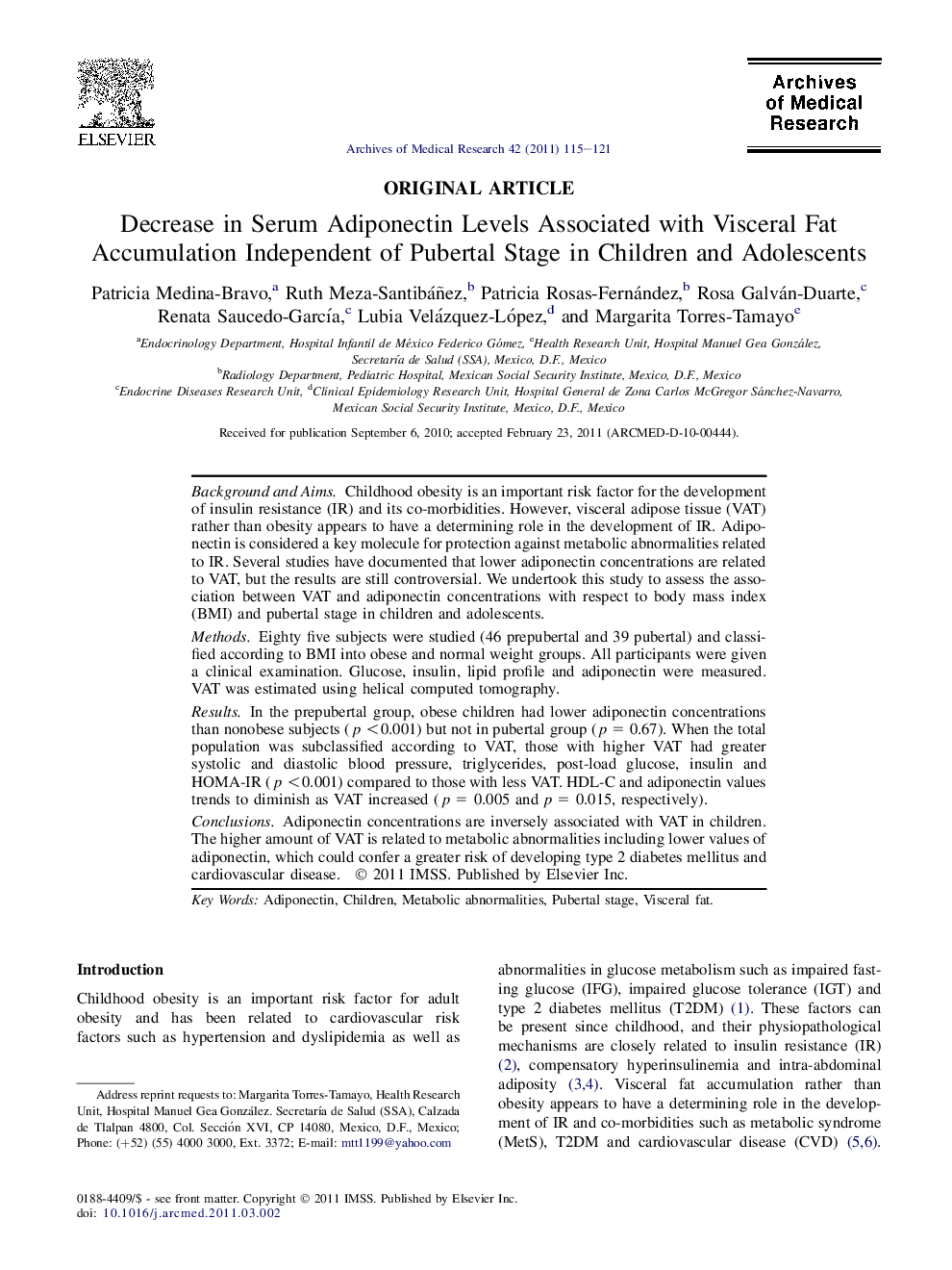| Article ID | Journal | Published Year | Pages | File Type |
|---|---|---|---|---|
| 3446679 | Archives of Medical Research | 2011 | 7 Pages |
Background and AimsChildhood obesity is an important risk factor for the development of insulin resistance (IR) and its co-morbidities. However, visceral adipose tissue (VAT) rather than obesity appears to have a determining role in the development of IR. Adiponectin is considered a key molecule for protection against metabolic abnormalities related to IR. Several studies have documented that lower adiponectin concentrations are related to VAT, but the results are still controversial. We undertook this study to assess the association between VAT and adiponectin concentrations with respect to body mass index (BMI) and pubertal stage in children and adolescents.MethodsEighty five subjects were studied (46 prepubertal and 39 pubertal) and classified according to BMI into obese and normal weight groups. All participants were given a clinical examination. Glucose, insulin, lipid profile and adiponectin were measured. VAT was estimated using helical computed tomography.ResultsIn the prepubertal group, obese children had lower adiponectin concentrations than nonobese subjects (p <0.001) but not in pubertal group (p = 0.67). When the total population was subclassified according to VAT, those with higher VAT had greater systolic and diastolic blood pressure, triglycerides, post-load glucose, insulin and HOMA-IR (p <0.001) compared to those with less VAT. HDL-C and adiponectin values trends to diminish as VAT increased (p = 0.005 and p = 0.015, respectively).ConclusionsAdiponectin concentrations are inversely associated with VAT in children. The higher amount of VAT is related to metabolic abnormalities including lower values of adiponectin, which could confer a greater risk of developing type 2 diabetes mellitus and cardiovascular disease.
